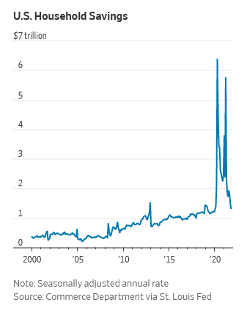By: Jeff Anderson, CFA
| Close | Weekly return | YTD return | |
| S&P 500 | 4,204.31 | -2.88% | -11.79% |
| Nasdaq Composite | 12,843.81 | -3.53% | -17.90% |
| Russell 2,000 | 1,979.67 | -1.06% | -15.86% |
| US Treasury 10yr Yield | 1.998 % | .26% |
Source: Wall St. Journal
“Beware The Ides of March”
Inflation, Taxes, and Market Crashes. Those are the three “big” things affecting retirement savings. It’s the cornerstone of our philosophy. This month, unfortunately, has experienced all three. Many of us are preparing to file taxes next month. Inflationary pressures have increased with the Russian-Ukraine conflict, and to top it off we’re amid an equity market correction brought on by geopolitical events changing monetary policy and inflation which, unfortunately, looks like it will stay higher longer. It is times like these that can really test our faith. Will oil prices tip us into recession? Are we headed towards a 1970’s style stagflation? Will things ever get back to “normal”? Are these the questions we thought of on our own or are they the rumblings of the financial news media looking to grab our attention? Well, they have our attention. Fortunately for us, we have history on our side. There aren’t many (if any) decades over the past 120 years that didn’t involve volatile markets, wars, or inflation/deflation/stagflation.
What is stagflation? Stagflation is characterized by slow economic growth and high unemployment accompanied by risking prices (i.e., higher inflation). We certainly aren’t in a stagflation environment now. Unemployment is low and growth is still strong (but slowing in some areas). Things can obviously change, and with oil prices marching higher and higher and $6 per gallon prices at the pump, the pressure on our wallets is tighter. Airlines are increasing ticket prices to help with rising fuel prices which may temper people’s appetite for planning vacations. Food costs will likely remain elevated given the cost of transportation. The economy moves in a cycle, and it always has, and until someone invents a better economic model for society, it will continue to do so. But, as of today, the odds of a ‘70 style stagflation are low. Like sports betting, odds can change.
We will always have something to worry about, but putting things in context, having a plan, and most importantly being able to reduce the noise will be the best antidote.
Breaking Down Inflation:
We may be at risk of beating the dead horse of “inflation, inflation, inflation”. Can we stop talking about it? Hopefully, we will be able to look at it in the rearview mirror like we have with COVID-19. For the time being, we’ll write about it when we think there’s something noteworthy.

The Wall Street Journal put out a good piece on where the 7.5% rise in consumer prices in 2021 came from. Which is the rate at the end of February which clocked in at 7.9%. Prices are likely to remain elevated for at least the first half of 2022. If the Ukrainian conflict continues into the summer, prices may go even higher.
See the chart below highlighting all the components of inflation.







